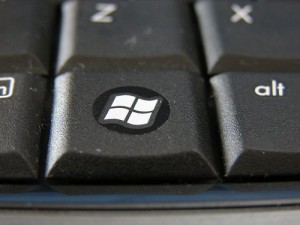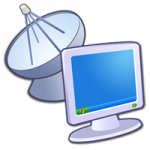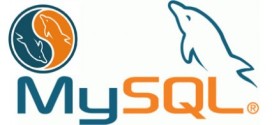Just Imagine One day your mouse hanged while you working with some urgent file. As a system support person many times I forced to work on a computer without a mouse. I realized that, it’s easier than mouse clicks if we study the keys.
If you opened many windows (maximized ) and what you do if you want to go quickly to the desktop, Minimize all the windows ? Try the windows shortcut key “ Window key + D “ (Show desktop) it will show the desktop immediately. There are many helpful shortcut keys are available. Following are some of them.
You can also try this Windows run commands here
| General keyboard shortcuts | |
| Press | To |
| CTRL+C | Copy. |
| CTRL+X | Cut. |
| CTRL+V | Paste. |
| CTRL+Z | Undo. |
| DELETE | Delete. |
| SHIFT+DELETE | Delete selected item permanently without placing the item in the Recycle Bin. |
| CTRL while dragging an item | Copy selected item. |
| CTRL+SHIFT while dragging an item | Create shortcut to selected item. |
| F2 | Rename selected item. |
| CTRL+RIGHT ARROW | Move the insertion point to the beginning of the next word. |
| CTRL+LEFT ARROW | Move the insertion point to the beginning of the previous word. |
| CTRL+DOWN ARROW | Move the insertion point to the beginning of the next paragraph. |
| CTRL+UP ARROW | Move the insertion point to the beginning of the previous paragraph. |
| CTRL+SHIFT with any of the arrow keys | Highlight a block of text. |
| SHIFT with any of the arrow keys | Select more than one item in a window or on the desktop, or select text within a document. |
| CTRL+A | Select all. |
| F3 | Search for a file or folder. |
| ALT+ENTER | View properties for the selected item. |
| ALT+F4 | Close the active item, or quit the active program. |
| ALT+Enter | Displays the properties of the selected object. |
| ALT+SPACEBAR | Opens the shortcut menu for the active window. |
| CTRL+F4 | Close the active document in programs that allow you to have multiple documents open simultaneously. |
| ALT+TAB | Switch between open items. |
| ALT+ESC | Cycle through items in the order they were opened. |
| F6 | Cycle through screen elements in a window or on the desktop. |
| F4 | Display the Address bar list in My Computer or Windows Explorer. |
| SHIFT+F10 | Display the shortcut menu for the selected item. |
| ALT+SPACEBAR | Display the System menu for the active window. |
| CTRL+ESC | Display the Start menu. |
| F10 | Activate the menu bar in the active program. |
| RIGHT ARROW | Open the next menu to the right, or open a submenu. |
| LEFT ARROW | Open the next menu to the left, or close a submenu. |
| F5 | Refresh the active window. |
| BACKSPACE | View the folder one level up in My Computer or Windows Explorer. |
| ESC | Cancel the current task. |
| SHIFT when you insert a CD | Prevent the CD from automatically playing. |
| Dialog box keyboard shortcuts | |
| Press | To |
| CTRL+TAB | Move forward through tabs. |
| CTRL+SHIFT+TAB | Move backward through tabs. |
| TAB | Move forward through options. |
| SHIFT+TAB | Move backward through options. |
| ALT+Underlined letter | Carry out the corresponding command or select the corresponding option. |
| ENTER | Carry out the command for the active option or button. |
| SPACEBAR | Select or clear the check box if the active option is a check box. |
| Arrow keys | Select a button if the active option is a group of option buttons. |
| F1 | Display Help. |
| F4 | Display the items in the active list. |
| BACKSPACE | Open a folder one level up if a folder is selected in the Save As or Open dialog box. |
| Windows Key keyboard shortcuts | |
| Press | To |
| Windows Key | Display or hide the Start menu. |
| Windows Key +BREAK | Display the System Properties dialog box. |
| Windows Key +D | Show the desktop. |
| Windows Key +M | Minimize all windows. |
| Windows Key +Shift+M | Restores minimized windows. |
| Windows Key +E | Open My Computer. |
| Windows Key +F | Search for a file or folder. |
| Windows Key CTRL+ +F | Search for computers. |
| Windows Key + F1 | Display Windows Help. |
| Windows Key + L | Lock your computer if you are connected to a network domain, or switch users if you are not connected to a network domain. |
| Windows Key +R | Open the Run dialog box. |
| Windows Key +U | Open Utility Manager. |
| Internet Explorer keyboard Shortcuts | |
| Press | To |
| F4 | Display the Address bar history |
| F5 | Refresh the Web page if the time stamp for the Web version and your locally cached version are different |
| Ctrl-F5 | Refresh irregardless |
| F6 | Move forward between frames |
| Ctrl-Enter | add www. prefix and .com suffix to text in address bar |
| Ctrl-Tab | Move forward between frames |
| Shift-Ctrl-Tab | Move back between frames |
| Shift-F10 | Display a shortcut menu for a link |
| F11 | Toggle between Full Screen and regular view |
| Home | Move to the beginning of the document |
| Alt-Home | Go to your Home page |
| End | Move to the end of the document |
| Up Arrow | Move forward through the list of AutoComplete matches |
| (when in address bar) | |
| Down Arrow | Move back through the list of AutoComplete matches |
| (when in address bar) | |
| Alt-Up Arrow | Move selected item up in the Favorites list in the Organize Favorites dialog box |
| (when in Favorites list) | |
| Alt-Down Arrow | Move selected item down in the Favorites list in the Organize Favorites dialog box |
| (when in Favorites list) | |
| Ctrl-Left Arrow | move the cursor left to the next period or / |
| (when in address bar) | |
| Ctrl-Right Arrow | move the cursor right to the next period or / |
| (when in address bar) | |
| Alt-Right Arrow | Go to the next page |
| Alt-Left Arrow | Go to the previous page |
| Alt-D | Select the text in the Address bar |
| Backspace | Go to the previous page |
| Ctrl-A | Select All |
| Ctrl-B | Open the Organize Favorites dialog box |
| Ctrl-C | Copy the selected items to the Clipboard |
| Ctrl-D | Add the current page to your favorites |
| Ctrl-E | Open Search in Explorer bar |
| Ctrl-F | Find on the page |
| Ctrl-H | Open History in Explorer bar |
| Ctrl-I | Open Favorites in Explorer bar |
| Ctrl-L | Go to new location |
| Ctrl-N | Open New window |
| Ctrl-P | Print current Page or active Frame |
| Ctrl-R | Refresh the Web page if the time stamp for the Web version and your locally cached version are different |
| Ctrl-S | Save the current page |
| Ctrl-V | nsert the contents of the Clipboard at the selected location |
| Ctrl-W | Close current Window |
| Ctrl-X | Remove the selected items and copy them to the Clipboard |
| Esc | Stop loading current page |
| Outlook Express keyboard shortcuts | |
| Press | To |
| CTRL+O or ENTER | Open a selected message |
| CTRL+ENTER or CTRL+Q | Mark a message as read |
| TAB | Move between the Folders list (if on), message list, preview pane, and Contacts list (if on). |
| CTRL+SHIFT+A | Mark all news messages as read |
| CTRL+W | Go to a newsgroup |
| LEFT ARROW or PLUS SIGN (+) | Expand a news conversation (show all responses) |
| RIGHT ARROW or MINUS SIGN (-) | Collapse a news conversation (hide messages) |
| CTRL+J | Go to the next unread newsgroup or folder |
| CTRL+SHIFT+M | Download news for offline reading |
| CTRL+P | Print the selected message |
| CTRL+M | Send and receive e-mail |
| DEL or CTRL+D | Delete an e-mail message |
| CTRL+N | Open or post a new message |
| CTRL+SHIFT+B | Open the Address Book |
| CTRL+R | Reply to the message author |
| CTRL+F | Forward a message |
| CTRL+SHIFT+R or CTRL+G (news only) | Reply to all |
| CTRL+I | Go to your Inbox |
| CTRL+> or CTRL+SHIFT+> | Go to the next message in the list |
| CTRL+< or CTRL+SHIFT+< | Go to the previous message in the list |
| ALT+ENTER | View properties of a selected message |
| F5 | Refresh news messages and headers |
| CTRL+U | Go to the next unread e-mail message |
| CTRL+SHIFT+U | Go to the next unread news conversation |
| CTRL+Y | Go to a folder |
| Using Terminal Server shortcut keys | |
| Press | To |
| ALT+PAGE UP | Switches between programs from left to right. |
| ALT+PAGE DOWN | Switches between programs from right to left. |
| ALT+INSERT | Cycles through the programs in the order they were started. |
| ALT+HOME | Displays the Start menu. |
| CTRL+ALT+BREAK | Switches the client between a window and full screen. |
| CTRL+ALT+END | Brings up the Windows Security dialog box. |
| ALT+DELETE | Displays the Windows menu. |
| CTRL+ALT+Minus (-) symbol on the numeric keypad | Places a snapshot of the active window, within the client, on the Terminal server clipboard (provides the same functionality as pressing PrintScrn on a local computer.) |
| CTRL+ALT+Plus (+) symbol on the numeric keypad | Places a snapshot of the entire client window area on the Terminal server clipboard (provides the same functionality as pressing ALT+PrintScrn on a local computer.) |
| Help Viewer keyboard shortcuts | |
| Press | To |
| ALT+SPACEBAR | Display the system menu. |
| SHIFT+F10 | Display the Help viewer shortcut menu. |
| ALT+TAB | Switch between the Help viewer and other open windows. |
| ALT+O | Display the Options menu. |
| ALT+O, and then press T | Hide or show the navigation pane. |
| CTRL+TAB | Switch to the next tab in the navigation pane. |
| CTRL+SHIFT+TAB | Switch to the previous tab in the navigation pane. |
| UP ARROW | Move up one topic in the table of contents, index, or search results list. |
| DOWN ARROW | Move down one topic in the table of contents, index, or search results list. |
| PAGE UP | Move up one page in the table of contents, index, or search results list. |
| PAGE DOWN | Move down one page in the table of contents, index, or search results list. |
| F6 | Switch focus between the navigation pane and the topic pane. |
| ALT+O, and then press R | Refresh the topic that appears in the topic pane. |
| UP ARROW or DOWN ARROW | Scroll through a topic. |
| CTRL+HOME | Move to the beginning of a topic. |
| CTRL+END | Move to the end of a topic. |
| CTRL+A | Highlight all text in the topic pane. |
| ALT+O, and then press P | Print a topic. |
| ALT+O, and then press B | Move back to the previously viewed topic. |
| ALT+O, and then press F | Move forward to the next (previously viewed) topic. |
| ALT+F4 | Close the Help viewer. |
Don’t forgot to comment if you like this
 Binbert Technology | Computer | Security | Networking | Mobile
Binbert Technology | Computer | Security | Networking | Mobile



[…] here to get the complete list of windows run commands. Also try windows Shortcut keys here Leave a Reply 25 views, 8 so far today | Tags: How to, shortcuts, windows Windows IE and […]
Amazing… very interesting subject. I will blog about it likewise!
Great list, Here are few commands of windows 7, Please add them in this list too.
http://www.itoperationz.com/2010/01/windows-7-a-comprehensive-list-of-commands/
@azhar
Thanks for the comment, I will post a complete list of windows 7 Keyboard shortcut
NIce list…!!
it will help me a lot…!!
thanks alot it will help us
Hi!!!!
Gr8 work!!!!! This is how Techies work!!!!! Keep up d good wrk…..